Failure to thrive (FTT) in children
At Children's Health℠, our comprehensive inpatient and outpatient feeding program helps kids experiencing failure to thrive or malnutrition and their families consume better nutrition to promote weight gain and growth.
Our team of experts is experienced in caring for kids whose failure to thrive or malnutrition is caused by medical conditions, oral motor and/or sensory aversions to food. We work one-on-one with families to personalize plans to expand the volume, variety and texture of foods and drinks their child will accept.
What is failure to thrive (FTT) in children?
Failure to thrive (FTT) happens when a child doesn’t get enough nutrients and calories to grow and gain weight in a healthy way. When this happens, babies and kids often experience low energy and don’t get the nourishment they need for their brains, muscles and bones to develop like they should.
Failure to thrive is not a disease or disorder itself. It's a sign that a child is undernourished, and it can be fixed by providing the right diet.
Babies and children with failure to thrive are often smaller than their peers.
Teenagers can be short-stature and experience delayed puberty.
Failure to thrive puts kids at risk of developmental delays, like walking, talking and struggling to learn.
What are the different types of failure to thrive (FTT) in children?
Inadequate energy intake - When a child does not consume enough calories.
Inadequate energy absorption - When a child is not able to absorb enough calories.
Increased metabolic demand - When a child has increased calorie needs.
Defective utilization - When a child does not intake enough calories.
What are the signs and symptoms of failure to thrive (FTT) in children?
Slowed height or head growth
Low energy levels
Tiring easily and/or sleeping excessively
Irritability and fussiness
Delayed milestones
Dehydration – sunken eyes
Frequent illness
How is failure to thrive (FTT) in children diagnosed?
Physical exam
Your child’s doctor will start by doing a complete physical exam, and measuring your child's weight, height and head circumference. They’ll review your child’s medical history from your pediatrician’s well-child checkups to understand how they’re progressing compared to other children their age and sex.
Blood and urine test
Your child’s doctor may order some blood and urine tests to check for medical problems that may be affecting your child’s ability to gain weight and grow. We’ll also talk to you about your child’s eating routine, habits, likes and dislikes.
This information, along with a physical exam will help your doctor and dietitian ensure your child gets the nutrition they need.
What causes failure to thrive (FTT) in children?
The most common cause of failure to thrive is a primary medical condition that makes it difficult to eat or retain nutrition.
Some of the medical conditions that cause failure to thrive include:
Neurological conditions
Metabolic disorders
Heart conditions
Feeding or Eating disorders
Sensory processing disorders
Behavioral avoidance due to past medical history
Other non-medical reasons a child may not be getting the right amount of nutrition at home include:
Parents incorrectly mixing formula, so an infant doesn't get enough calories
Difficulties breastfeeding
Children having trouble starting solid foods
Families not being able to afford enough food
Parents and caregivers misunderstanding a child’s hunger cues
Parents having a low emotional bond with their child
How is failure to thrive (FTT) in children treated?
Our dietitians are experts in nutrition that promotes the growth and development of children. They can build a nutrition care plan that best meets each child’s needs.
We start by learning about your child’s medical and growth history, type and quantity of food and beverage intake including allergies, GI symptoms and intolerances as well as any barriers your child faces around eating.
If feeding concerns are significant, we may consult with a pediatric psychologist, speech therapist, and/or occupational therapist (OT) to better assess your child’s challenges with eating.
Nutrition treatment plans may include things like:
Disease-specific diet plans
Calorie boosting
Nutrition supplements
Alternative nutrition treatment, like tube feedings
Vitamin and mineral supplements
Nutrition education and counseling
The pediatric feeding team can help to:
Introducing new foods – expanding variety and textures accepted
Overcoming challenges with mealtime
Increasing oral motor and swallowing ability
Decreasing sensitivity to new foods and food textures
Decreasing reliance on tube feedings
Teaching families to prepare foods that are safe for their child.
It’s important to remember that weight gain takes time and it could take several weeks or months before your child meets their ideal weight.
Failure to thrive (FTT) doctors and providers
At Children’s Health, our experts in gastroenterology as well as the pediatric feeding team work to increase nutrition to help your child grow and stay healthy. Together, we help your family build a nutrition plan that you can easily maintain at home.
 Bradley Barth, MDPediatric Gastroenterologist
Bradley Barth, MDPediatric Gastroenterologist Michele Alkalay, MDPediatric Gastroenterologist
Michele Alkalay, MDPediatric Gastroenterologist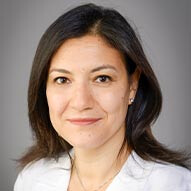 Amal Aqul, MDPediatric Hepatologist
Amal Aqul, MDPediatric Hepatologist Sarah Barlow, MDPediatric Gastroenterologist
Sarah Barlow, MDPediatric Gastroenterologist Nandini Channabasappa, MDPediatric Gastroenterologist
Nandini Channabasappa, MDPediatric Gastroenterologist Aakash Goyal, MDPediatric Gastroenterologist
Aakash Goyal, MDPediatric Gastroenterologist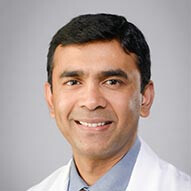 Bhaskar Gurram, MDPediatric Gastroenterologist
Bhaskar Gurram, MDPediatric Gastroenterologist Lauren Lazar, MDPediatric Gastroenterologist
Lauren Lazar, MDPediatric Gastroenterologist Megha Mehta, MDPediatric Gastroenterologist
Megha Mehta, MDPediatric Gastroenterologist Derek Ngai, MDPediatric Gastroenterologist
Derek Ngai, MDPediatric Gastroenterologist Claudia Phen, MDPediatric Gastroenterologist
Claudia Phen, MDPediatric Gastroenterologist Charina Ramirez, MDPediatric Gastroenterologist
Charina Ramirez, MDPediatric Gastroenterologist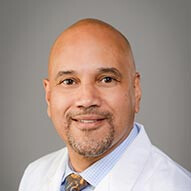 Norberto Rodriguez-Baez, MDPediatric Hepatologist
Norberto Rodriguez-Baez, MDPediatric Hepatologist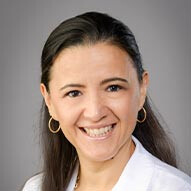 Isabel Rojas Santamaria, MDPediatric Gastroenterologist
Isabel Rojas Santamaria, MDPediatric Gastroenterologist Rinarani Sanghavi, MDPediatric Gastroenterologist
Rinarani Sanghavi, MDPediatric Gastroenterologist Meghana Sathe, MDPediatric Gastroenterologist
Meghana Sathe, MDPediatric Gastroenterologist Mhammad Gaith Semrin, MDPediatric Gastroenterologist
Mhammad Gaith Semrin, MDPediatric Gastroenterologist Luis Sifuentes-Dominguez, MDPediatric Gastroenterologist
Luis Sifuentes-Dominguez, MDPediatric Gastroenterologist Jessina Thomas, MDPediatric Gastroenterologist
Jessina Thomas, MDPediatric Gastroenterologist David Troendle, MDPediatric Gastroenterologist
David Troendle, MDPediatric Gastroenterologist Laura Austin, PhDPediatric Psychologist
Laura Austin, PhDPediatric Psychologist Phuong Luu, PA-CPhysician Assistant - Gastroenterology
Phuong Luu, PA-CPhysician Assistant - Gastroenterology Van Nguyen, APRN, PNP-PCNurse Practitioner - Gastroenterology
Van Nguyen, APRN, PNP-PCNurse Practitioner - Gastroenterology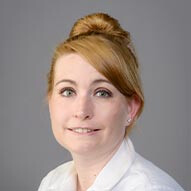 Jennifer Peacock, APRN, PNP-PCNurse Practitioner - Gastroenterology
Jennifer Peacock, APRN, PNP-PCNurse Practitioner - Gastroenterology Shabina Walji-Virani, APRN, PNP-PCNurse Practitioner - Gastroenterology
Shabina Walji-Virani, APRN, PNP-PCNurse Practitioner - Gastroenterology Christine Winser-Bean, APRN, FNPNurse Practitioner - Gastroenterology
Christine Winser-Bean, APRN, FNPNurse Practitioner - Gastroenterology